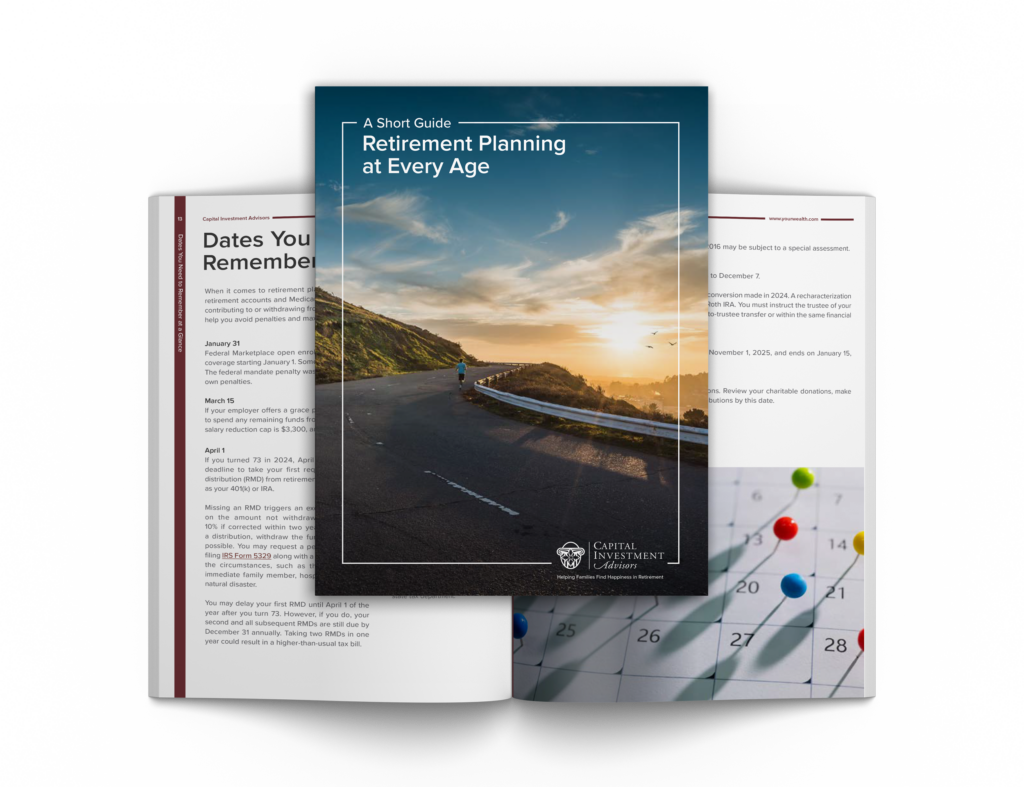What’s your definition of “early” retirement? Sixty? Fifty-two?
A California couple recently retired in their mid-30s with $1 million in the bank, according to a story in Forbes magazine.
That remarkable accomplishment would be difficult for most of us to replicate. I know I couldn’t do it — not with four kids!
The couple, Travis and Amanda, had no kids, were well-paid tech professionals, and already had $350,000 saved when they undertook this project. But their story reinforces several important lessons about building wealth for retirement.
Set a goal. When Travis lost his information systems job in 2012, he quickly realized he really didn’t like working. He preferred the freedom of not working. So, he and Amanda set a goal of amassing enough money to retire as soon as possible. They pegged that number at $1 million. The couple planned to live on 3 percent to 4 percent of their portfolio’s value every year and expected a 7 percent annual growth rate.
Get organized. You can’t map a journey unless you know the starting point. Travis and Amanda put all their financial information into the free budgeting site Mint.com and did a deep dive analysis of their assets and spending. They also combined several 401(k)s from former employers.
Your job is your biggest asset. Travis went back to work purely to make the couple’s retirement dream come true. He switched jobs three times in three years to obtain salary increases. Travis told Forbes he kept his eyes on the prize, which made a great employee. Amanda, a chemical engineer, stayed in her job and racked up seniority increases. At their earnings peak, the couple was making a combined $200,000.
Prioritize saving. The couple saved as much as 65 percent of their income during the three years it took to amass $1 million. They lived in a rent-controlled $2,200-a-month Oakland, Calif., house (crazy cheap for the Bay Area) and aggressively cut costs by doing things like riding bikes instead of driving, and hanging the laundry outside to save on running the dryer. The two credit their frugal parents for teaching them how to live modestly.
Watch out for fees, penalties and taxes. High fees can be a great return-killer. You should review and question every fee you pay, even on funds inside your 401(k). Amanda and Travis put much of their retirement money in low-cost ETFs and index funds. These paid off nicely, as the couple rode a more than 60 percent increase in the S&P 500 from 2012 until 2015.
The couple planned ahead and was able to avoid the 10 percent IRA early withdrawal penalty by using a Roth IRA conversion ladder. In this forward-looking strategy, they transferred a certain amount of money each year from their traditional IRA to a Roth IRA. Once five years had passed from the initial IRA to Roth conversion, they were able to tap the amount converted to their Roth in an annual laddered sequence and avoid the early withdraw penalty.
Simplify before retirement. As they approached their goal, Amanda and Travis sold much of the stuff in their two-story house.
Watch the outflow in retirement. While most conversations about retirement planning center in saving, you need to think carefully about your post-work spending if you want your nest egg to see you through 20 or more years.
Travis and Amanda are very disciplined about this. They stuck to their plan to spend no more than 4 percent of their portfolio’s current value per year. As a result, they sometimes had to cut back their monthly spending when the market dipped. They did so even while on their long-planned retirement adventure, a driving trip from San Francisco to Costa Rica. They made that journey in their frugal fashion, driving a used Toyota 4Runner that often doubled as their nighttime accommodations. When the couple arrived in Costa Rica, they leased a house for $1,000 a month — about $30 a night. They cooked most of their own meals and weren’t interested in expensive resorts or tourist activities.
Relocate and save. When Amanda and Travis returned to the U.S., they left the super-pricey Bay Area and bought a $270,000 house in Asheville, N.C. They chose the artsy mountain town because the cost of living is relatively low. They also believe it will be easy to rent the house during their coming summer travels.
Travis and Amanda insist they are done working. But they plan to have a family in the future. Their frugality is impressive, but the cost of kids is a game changer for any couple’s finances. So, we’ll see.
Again, this is an extreme example of achieving an early retirement. But if these two 30-somethings can accumulate about $650,000 in three years, surely you can achieve your savings goals in 20 or 30 years by adopting some of these same mindsets and tactics.
Hey, wait. We just learned a financial lesson from two millennials! Will wonders never cease?
Read the original AJC article here.










